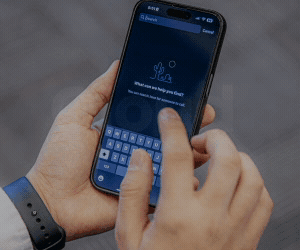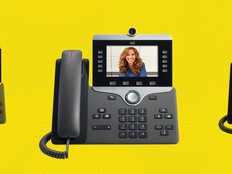If the prospect of moving phone systems to the cloud seems worrisome, learn the truth about three common myths.
Myth No. 1: Cloud-Based Phone Systems Are Too Expensive
Price is often the biggest hesitation before adopting any new technology, but it may come as a surprise that cloud-based calling can be similar in price to traditional phone systems, if not less expensive.
“Cloud-based phone systems do not have to be more expensive than on-premises systems,” says John Reeder, vice president of product management at Cisco. For example, the Cisco Desk Phone 9800 Series, released last year, is built to be used either in the cloud or on-premises, but the costs are the same regardless of how it’s used, and service is easy to change with a simple reset.
Also, because cloud-based phone systems are often bundled with other cloud services, they may end up costing less than traditional, on-premises phones.
DISCOVER: Cloud phone systems offer several cost-saving benefits.
Myth No. 2: Cloud-Based Phone Systems Are Unreliable
If your staff and instructors can rely on their internet access to answer email and post class assignments, they can rely on a cloud-based phone system to make and receive calls. Cloud calling is as reliable as the user’s internet service. For most colleges and universities, internet service is highly reliable, which means cloud-based phone systems will also be reliable.
“Cloud-based phone systems are just as reliable as on-premises,” Reeder says. “However, cloud-based systems use public networks, which can impact quality. The reliability and speed of your internet connection are crucial for cloud-based phone services to maintain quality and strong connectivity.”
LEARN MORE: Migrating to a Microsoft Teams phone system can be done in four steps.
If there are any network performance issues, many cloud calling platforms include built-in quality improvements, Reeder says.
Myth No. 3: Cloud-Based Phone Systems Can’t Provide 911 Access
Opting for a modern, cloud-based phone system does not mean giving up the security of quick access to emergency services by dialing 911. In fact, most cloud calling systems are set up to integrate with local emergency systems to provide 911 access.
Today’s cloud-based phone systems use specialized routing technologies that direct emergency calls to the nearest Public Safety Answering Point — a type of call center that receives and handles public phone calls for emergency responders — based on the registered location of the phone, Reeder says. Cloud-calling providers use Automatic Location Identification systems to provide PSAP representatives with the specific location of 911 callers.
Some providers offer Enhanced 911, which uses cloud technology to map remote users to the appropriate PSAP automatically, ensuring that every 911 call is routed to the right location and the nearest emergency services provider. If the cloud-based Enhanced 911 provider ever failed to route calls automatically, emergency call routing centers are set up to take over and manually route the call to the nearest PSAP.
UP NEXT: Butler Community College opted for a cloud-based collaboration solution.
For example, Cisco works with partners to offer 911 emergency services through its cloud calling solution, Reeder says. Those services include real-time notifications to designated personnel within an organization and integration with local emergency systems to improve coordination and response times.
“Depending on needs and location, Cisco can also offer additional emergency services such as Enhanced 911, which automatically provides emergency responders with the caller's location and call-back information,” Reeder says. “This ensures that in the event of an emergency, help can be dispatched to the correct location quickly, even if callers are unable to communicate their address.”











